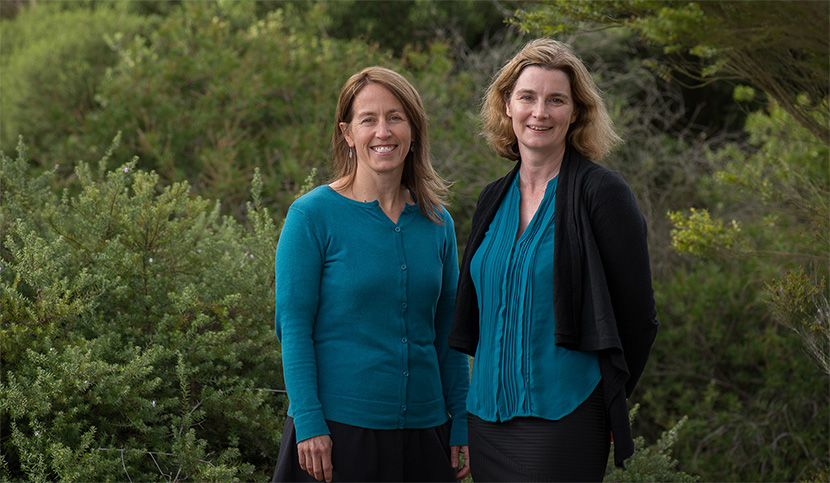Citizen scientists are tracking the effect of environmental flows from a decommissioned reservoir near Victoria’s Great Ocean Road, under the guidance of researchers from Deakin and Barwon Water.
Local conservation groups and interested individuals are working with Deakin University and Victoria’s largest regional urban water corporation, Barwon Water, to quantify the ecological response of Painkalac Creek to planned water releases from Painkalac Reservoir, near Moggs Creek.
The man-made reservoir supplied water to Aireys Inlet and Fairhaven until the Great Ocean Road townships were connected to the greater Geelong water supply network in 2016. The Reservoir was decommissioned, but has been maintained to ensure continued environmental flows into Painkalac Creek – which feeds the estuary at Aireys Inlet – and was opened to the public for recreational use in April last year.
The ‘Painkalac Reservoir Environmental Flow Project’, a collaboration between Deakin’s Centre for Regional and Rural Futures (CeRRF) and Barwon Water, will evaluate the impact of planned releases from the Reservoir on the water quality and aquatic life of Painkalac Creek over a number of years.
“This collaborative community project is an example of working hand-in-hand with local citizens to protect the environment surrounding the Painkalac Reservoir,” said Barwon Water General Manager Customers and Community Jo Murdoch.
“The feedback and views shared by the community has helped shape an environmental watering plan.”
The project will draw on data collected from the area over the years by conservation agencies and volunteers and new data to form a picture of conditions in the creek before and after environmental flows.
“We want to find out how the environmental flows affect the Painkalac Creek ecosystem and how we can involve the community in this,” said Associate Professor Rebecca Lester, Co-deputy Director of CeRRF and lead researcher in the Quantitative Aquatic Ecosystem Laboratory, which works with industry, community and government groups to facilitate better environmental outcomes while maintaining socioeconomic use of aquatic ecosystems.
“Some of the major goals we have for the project are to understand what happens in the creek when the water is released from the Reservoir, how far down the creek it flows and how organisms living in the creek respond to the extra flows.”

PhD student Ms Krista Bonfantine (left) and Associate Professor Rebecca Lester, Co-deputy Director of CeRRF and lead researcher in the Quantitative Aquatic Ecosystem Laboratory
As part of the project, ecologist and Deakin and Barwon Water PhD student Krista Bonfantine plans to investigate how community-generated data can contribute to the evaluation of environmental flows and what could be done to improve the accuracy and robustness of such data.
Ms Bonfantine, who founded the US-based Arid Land Innovation consulting group to merge ecology, fire and watershed science with community engagement and education, is passionate about citizen science and the benefits citizen scientists bring to research projects. She sees Australia as a trailblazer and world leader in citizen science and in water resource management.
“Data collected by volunteers with local knowledge of an area can be invaluable in providing a picture of what’s happening over time,” she said.
“I’ve learnt so much about the local history and the ecology since I started the project in November that I would never have known just from reading reports.”
Ms Bonfantine said she hoped her project would provide a clear picture of what’s happening in the Painkalac Creek ecosystem and “find a robust, scientific way forward” using the data the community has already collected and continues to collect.
“We want to explore what else would be useful for informing policy and management of the creek that is reasonable to expect of volunteers and sustainable in the long-term beyond this particular project,” she explained.
“There are a lot of things to consider. What sort of training do people require in making sure equipment is properly calibrated, for example, and how do we continue to touch base to make sure people are still collecting what we think they’re collecting as new volunteers come in or people’s skills drift over time? Is what we’re asking them to do appropriate for their level of training and understanding?
“We also want them to feel the project is relevant to them, so it’s not just pure science looking to answer a question the community doesn’t find interesting.”
Published by Deakin Research on 20 June 2018



